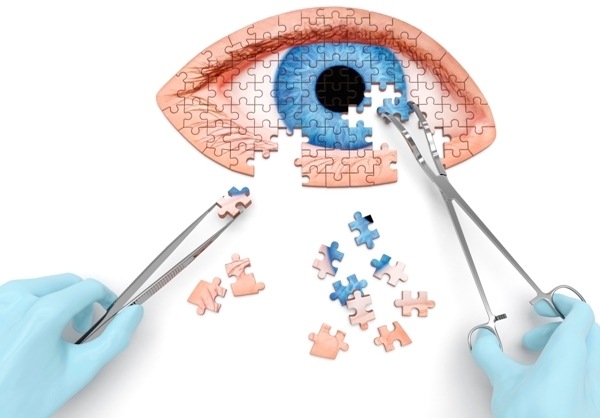
Ocular toxicology—the field of toxicology concerned with the eyes and the visual system—has become a vital component of drug development, with just as much interest aimed at drugs that target afflictions of the eye, as detecting drugs with off-target effects in the visual system.
Currently, the best way to deliver drugs for ocular ailments is through the intravitreal route via methods such as eye drops or or injections. But these solutions are often unpalatable for patients. “[In general,] people don’t like eyedrops,” says Evan Thackaberry, PhD, DABT, who is a toxicologist and therapeutic area leader at Genentech and Ocular Toxicology Specialty Section (OTSS) past president. “Genentech works mostly on drugs that are delivered intravitreally, but people don’t like that. They’d rather get drugs another way, so lots of companies are partnering up to improve delivery.”
 Non-intravitreal methods are difficult to develop, as the blood-retina barrier protects the eye just as the blood-brain barrier protects the brain. This can make it difficult to target orally consumed therapeutics to the eye, explains Dr. Thackaberry, “and for a large molecule, you’re just not going get good exposure.”
Non-intravitreal methods are difficult to develop, as the blood-retina barrier protects the eye just as the blood-brain barrier protects the brain. This can make it difficult to target orally consumed therapeutics to the eye, explains Dr. Thackaberry, “and for a large molecule, you’re just not going get good exposure.”
Although it’s often difficult to effectively treat illness in the visual system with oral medication, drugs intended to target other organs are instantly flagged if they show unexpected effects on the eyes. In fact, one of the fastest ways for a drug candidate to be eliminated from development is “if there’s any activity [affecting the visual system]. That’s a showstopper,” concludes Dr. Thackaberry.
“It’s a sensory system people aren’t willing to sacrifice for drug treatment,” adds Chris Somps, PhD, a Pfizer scientist who is the OTSS president. “Cancer patients will tolerate a lot in terms of adverse events, but when it comes to the eye, that’s something that’s not tolerated.”
To tackle ocular toxicity in drug development, toxicologists and ophthalmology researchers are working to develop new tools for predicting ocular toxicity and to expand our understanding of the molecular biology of the visual system. “There’s a lot of work going into organ-on-a-chip technologies [and] stem-cell derived organoids,” says Dr. Somps.
But 3-D retina models are in their infancy, and plenty of other challenges remain. It’s still quite difficult to culture ocular cells from the back of the eye, and the 3-D structure that is vital for their function is extraordinarily complex.
That intrinsic complexity is why it is important to bring together a cross-section of professionals involved ocular toxicology, pharmacology, and pharmacokinetics research and to provide a forum for them to share information and resources, say Drs. Thackaberry and Somps.
The OTSS and SOT are partnering to create just such a forum on June 27 and June 28 at the “Ocular Toxicology, Pharmacology and Drug Delivery: An Eye on the Future” Contemporary Concepts in Toxicology (CCT) meeting, being held at the Genentech campus in South San Francisco.

“The way the field is set up, a lot of folks that do ocular toxicology research might not come to [the SOT Annual Meeting], but go to their own meetings,” says Dr. Thackaberry. “This is a chance for us to see a little more of the picture because all we have is the data that we’ve generated, and we know that other good work is happening in other companies in other labs… It’s not easy to share information [since] a lot of it is proprietary, and I’m excited for us to be able to do that.”
Planning for the meeting has taken nearly two years and involved a coordinated effort between the meeting organizing committee, co-chaired by Drs. Thackaberry and Somps, and the SOT CCT Conferences Committee. The speakers have been confirmed and the agenda has been finalized, leaving only a few loose ends to tie up. “It’s mostly done, but we’re still having conversations here and there,” says Dr. Thackaberry. “It’s a daunting process.”
But in spite of the stress, he remains enthusiastic about the event, “I’m very excited. It’ll be a great meeting.”
For more information and to register for the “Ocular Toxicology, Pharmacology and Drug Delivery: An Eye on the Future” meeting, visit the CCT event page.